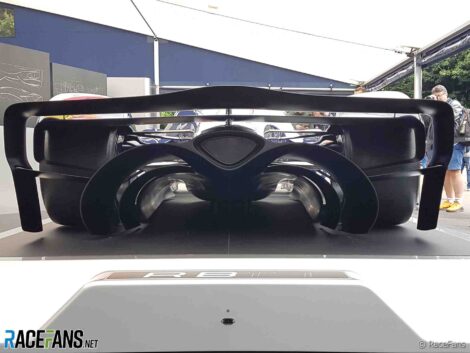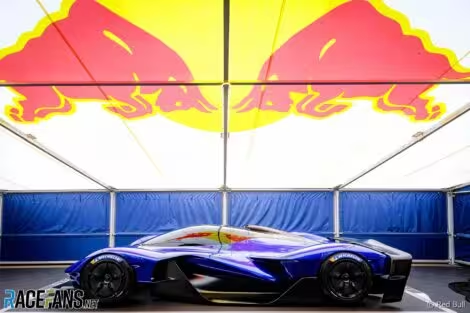Red Bull’s chief technical director Adrian Newey says his forthcoming RB17 track car produces more downforce than its bespoke tyres can cope with while cornering.
The star designer said they have solved the problem by reducing the downforce his Formula 1-inspired car generates above certain speeds. This is understood to have been achieved using active aerodynamics at the front and rear of the car, as F1 cars will use from 2026.
Other manufacturers have previously added maximum speed limits to hypercars to prevent tyres failing at extreme top speeds. The Bugatti Chiron, released in 2017, is electronically limited to 240kph (261mph).
But while the Chiron produces 1,500bhp and weighs just under two tonnes, the RB17’s mass is less than half that at 900kg, while the driver has 1,200bhp available. The RB17’s top speed limit is lower, at 370kph (229mph), and Newey said they also had to take steps to protect its tyres while cornering.
“The tyres were a big consideration,” he told Red Bull’s official channel. “Very early on we entered into a contract with Michelin to develop tyres especially for the car.
“But even with those special tyres we have to start reducing your downforce above 150 miles an hour [241kph].”
“Obviously it’s total tyre [load] so it’s the weight of the car plus the aero load,” he explained. “So one of the many reasons for really focusing on trying to get the weight as low as possible was because we knew that ultimately in high speed we would be tyre-limited.”
Advert | Become a RaceFans supporter and
The same reasoning led Newey to opt for a normally-aspirated engine and ditch early plans for a hybrid drive train on the front axle.

“The car went through a lot of iterations,” he said. “It started out as the electric motor on the front axle to give four-wheel-drive. But simulations showed us it was actually faster to save the weight and just put it on the rear axle.
“It started out with a V8 twin-turbo. Everybody of course wanted a normally aspirated [engine], it was how could we get a normally aspirated to give the power and the package size and the weight targets that we had set ourselves?
“That was quite a challenge, which once our powertrains group started – with opportune timing – we started to come up with solutions, working with that…
Click Here to Read the Full Original Article at RaceFans…

